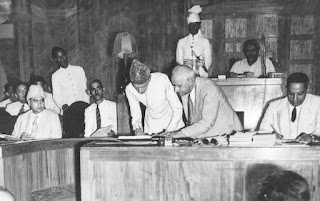Introduction:
India, with its rich and diverse history, stands as one of the oldest civilizations in the world. The history of India can be traced back to the Indus Valley Civilization, dating around 3300–1300 BCE. Over the millennia, India has witnessed the rise and fall of numerous empires, the spread of religions, and the emergence of a unique cultural tapestry. This comprehensive overview will explore key epochs in Indian history.
1. Indus Valley Civilization (3300–1300 BCE):
The earliest known civilization on the Indian subcontinent, the Indus Valley Civilization, flourished along the banks of the Indus River. With well-planned cities like Mohenjo-Daro and Harappa, the people of this civilization engaged in advanced urban planning, trade, and art. Despite its achievements, the decline of the Indus Valley Civilization remains a historical mystery.
2. Vedic Period (1500–500 BCE):
The Vedic period marked the composition of the sacred texts known as the Vedas, laying the foundation for Hinduism. Rigveda, the oldest Vedic text, reflects the religious and social life of the Indo-Aryans who migrated into the Indian subcontinent. The caste system began to take shape during this period, influencing the socio-religious structure.
3. Maurya Empire (322–185 BCE):
The Maurya Empire, under the rule of Chandragupta Maurya and later Emperor Ashoka, witnessed political consolidation and the spread of Buddhism. Ashoka's conversion to Buddhism had a profound impact on the empire, promoting non-violence and religious tolerance. The Maurya Empire extended its influence across much of the Indian subcontinent.
4. Golden Age of Gupta Empire (320–550 CE):
Regarded as the "Golden Age" of Indian history, the Gupta Empire flourished in art, science, and literature. The mathematician Aryabhata made significant contributions, while Kalidasa, the poet, and playwright, produced timeless works like "Shakuntala." This period saw advancements in metallurgy, medicine, and astronomy, making it a cultural zenith.
5. Medieval Period and Islamic Rule (8th–16th Century):
The medieval period witnessed the arrival of Islam in India, bringing about a synthesis of cultures. The Delhi Sultanate, founded in the 13th century, marked the beginning of Islamic rule. The Mughal Empire, established in 1526 by Babur, reached its pinnacle under Akbar, showcasing architectural marvels like the Taj Mahal. However, religious tensions persisted.
6. Colonial Era and British Rule (17th–20th Century):
The arrival of European powers, especially the British East India Company, marked the colonial era. The Battle of Plassey in 1757 and the subsequent establishment of British rule led to significant economic exploitation and social upheavals. The Indian National Congress, founded in 1885, became a pivotal force in the struggle for independence, culminating in India gaining independence in 1947.
7. Partition and Independence (1947):
The end of British rule resulted in the partition of India, creating two independent nations – India and Pakistan. The communal violence that accompanied the partition left a lasting impact on the subcontinent. Jawaharlal Nehru became the first Prime Minister of independent India, shaping the nation's democratic and socialist ideals.
8. Post-Independence India:
Post-independence, India faced the challenges of nation-building, economic development, and social progress. The country adopted a democratic system, emphasizing secularism and inclusivity. The Green Revolution in the 1960s and economic liberalization in the 1990s played crucial roles in India's economic growth.
9. Recent Developments and Global Position (21st Century):
In the 21st century, India has emerged as a global player in technology, economy, and diplomacy. The IT boom, space exploration, and economic reforms have positioned India as a major player in the international arena. However, challenges such as poverty, environmental concerns, and regional tensions persist.
Conclusion:
The history of India is a captivating narrative of ancient civilizations, cultural diversity, and a relentless quest for independence. From the ancient Indus Valley Civilization to the vibrant, democratic nation of today, India's journey is a testament to resilience and adaptation. As the subcontinent continues to evolve, its history remains a source of inspiration and reflection for generations to come.







.jpeg)






